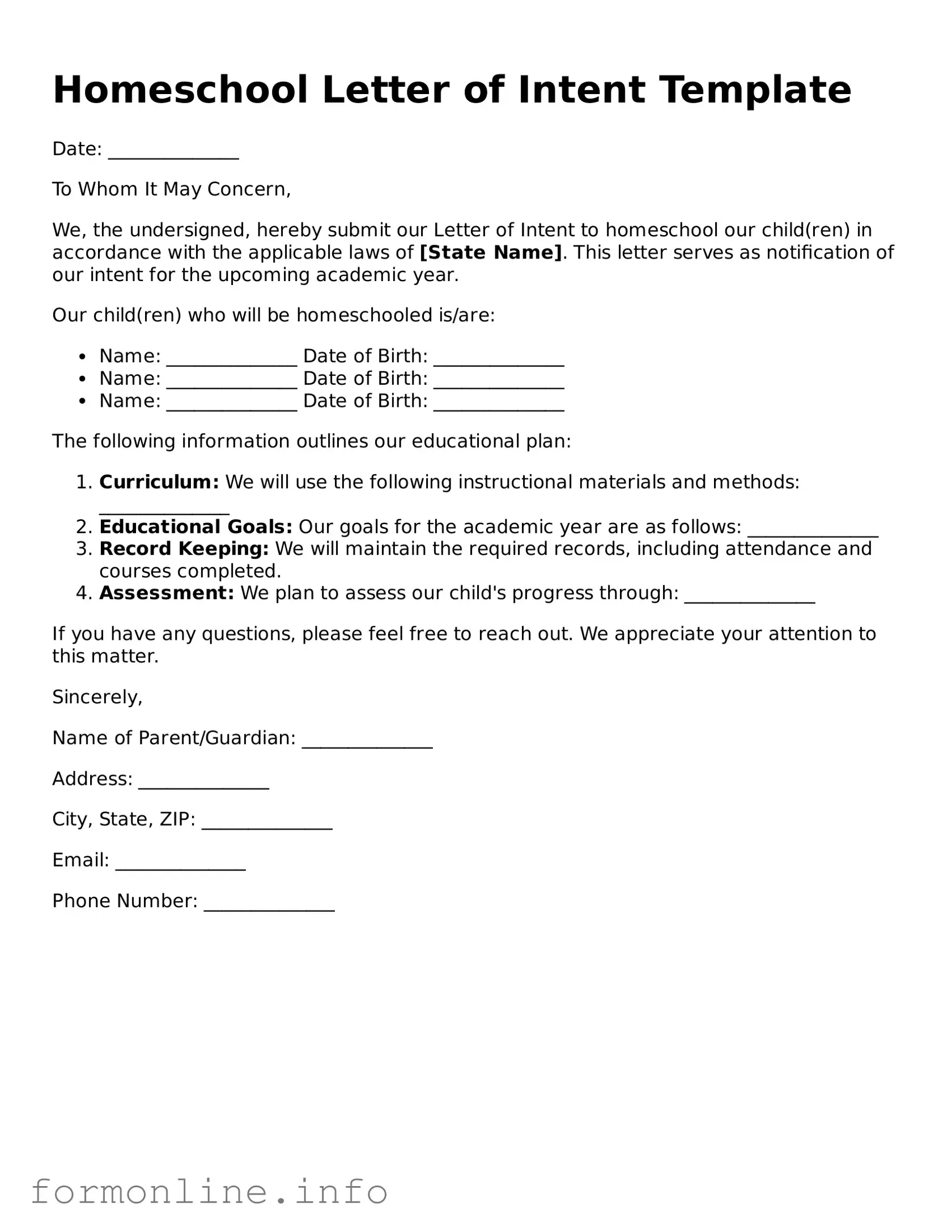Homeschool Letter of Intent Template
Date: ______________
To Whom It May Concern,
We, the undersigned, hereby submit our Letter of Intent to homeschool our child(ren) in accordance with the applicable laws of [State Name]. This letter serves as notification of our intent for the upcoming academic year.
Our child(ren) who will be homeschooled is/are:
- Name: ______________ Date of Birth: ______________
- Name: ______________ Date of Birth: ______________
- Name: ______________ Date of Birth: ______________
The following information outlines our educational plan:
- Curriculum: We will use the following instructional materials and methods: ______________
- Educational Goals: Our goals for the academic year are as follows: ______________
- Record Keeping: We will maintain the required records, including attendance and courses completed.
- Assessment: We plan to assess our child's progress through: ______________
If you have any questions, please feel free to reach out. We appreciate your attention to this matter.
Sincerely,
Name of Parent/Guardian: ______________
Address: ______________
City, State, ZIP: ______________
Email: ______________
Phone Number: ______________
